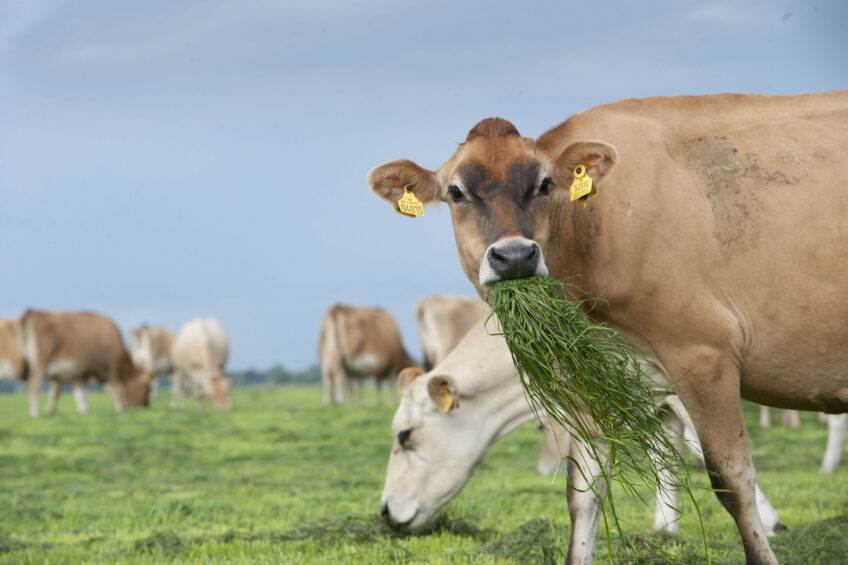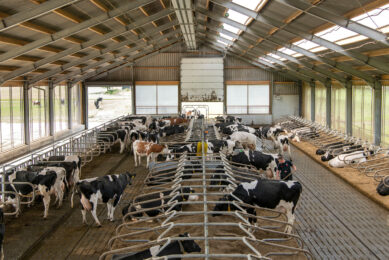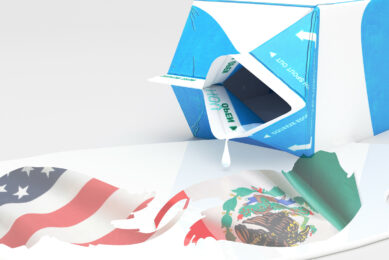Understanding the role of rumen microbes

New research that analyses microbes in cows’ stomachs could help boost meat and milk production leading to greater food security in the future.
Scientists from Scotland’s Rural College (SRUC) and the University of Edinburgh’s Roslin Institute undertook a study that could lead to research to understand which types of microbe, such as bacteria, are best at helping cattle to extract energy from their food, experts say.
Using metagenomics
The initial study also identifies enzymes that are specialised for breaking down plant material, which could help in the quest to develop new biofuels.The researchers focused on microbes found in a cow’s rumen which is the first of its 4 stomachs. The rumen is home to diverse strains of microorganisms, such as bacteria, archaea and fungi, which help the animal to extract energy and nutrients from its food. The team used an advanced technique called metagenomics, which involves analysing the genetic composition all of the microbes that exist within an organism, in this case a cow. In total, they studied samples of rumen gut contents from 43 cows and identified 913 diverse strains of microbes living in the rumen. Most of the microbes uncovered have never been seen before and may have potential uses in the biofuels and biotechnology industries. By analysing their genetic information, the team pinpointed previously unknown enzymes that can extract energy and nutrition from plant material. Beef and dairy cattle, and other milk-producing ruminants, provide food and nutrition to billions of people worldwide. Understanding how these animals convert plant-based diets into energy will be vital for securing the future of the world’s food supplies, experts say.

Understanding rumen microbial ecosystem
The research, published in the journal Nature Communications, was carried out in collaboration with experts at The Rowett Institute at the University of Aberdeen. Professor Rainer Roehe from SRUC said: “The newly identified microbial species in the rumen of beef cattle will greatly improve our understanding of how the rumen microbial ecosystem works. “Using breeding and nutritional interventions, we will be able to use this information to help improve cattle health and performance throughout the world.” Professor Mick Watson, of the University of Edinburgh’s Roslin Institute, said: “This has been a truly fascinating study, and really we are only beginning to understand what these microbes do. The fact most of them were very different to microbes that have already been discovered surprised us, so we just can’t wait to study them further. “If we can improve the efficiency of digestion in cows and other ruminants, we may be able to produce more food for people whilst using fewer resources. This is a key aim of improving global food security.”
Make cattle more effective
Also in the US, this topic is on the research agenda. 2 researchers with the University of Florida Institute of Food and Agricultural Sciences were awarded close to $ 700,000 in total from the USDA’s National Institute of Food and Agriculture to study swine influenza and to further investigate how microbes play a role in cattle nutrition and impact producers’ bottom lines.
Microbes in cattle’s stomachs help break down carbohydrates in their feed. Right now, scientists don’t know which microbes break-down which carbohydrates. Identifying these relationships could ultimately help make cattle feed more effective, Tim Hackmann, assistant professors in the department of animal sciences said. Mr Hackmann will begin by treating specific carbohydrates with fluorescent compounds and feeding them to microbes sampled from cattle. The microbes that metabolise this carbohydrate will glow under a microscope, he explained, telling researchers which ones have processed that carbohydrate. Mr Hackmann’s companion project aims to increase the amount of protein available to cattle, which he’s calculated could save the dairy industry about $ 122 million per year. Cattle get more than half their protein by digesting some of the microbes that live in their gut, he said. “What we want to do is increase the efficiency of protein production in microbes. Right now, they only direct about one-third of their energy toward growth. If microbes directed more energy to making protein, cattle would need less protein from food sources.”
Join 13,000+ subscribers
Subscribe to our newsletter to stay updated about all the need-to-know content in the dairy sector, two times a week.










